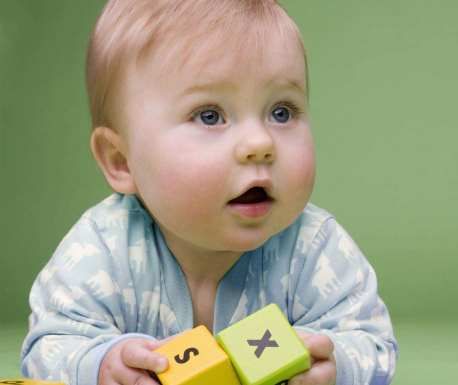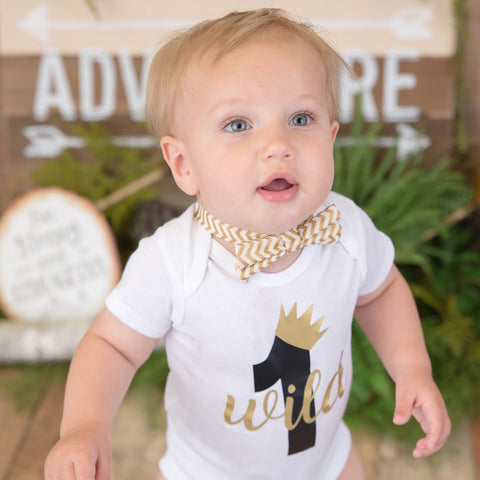
Contents
A 7-Year-Old Boy’s First Bear
A bear walked through an opening in the alders, triggering a surge of adrenaline.
“A bear’s coming, get ready.”
I whispered instructions in Jed’s ear as he was picking almonds out of the small plastic container I was holding. I slipped the snacks into the backpack between my legs and helped him move the rifle stock to his shoulder. I quietly toggled the tang safety on his gun while the bear was still approaching through the brush.
“Alright, just hold still and be ready to aim. He’s going to do just what I told you. Be patient.”
A Boy Like Me
I didn’t fully understand what it meant to see myself in my kids until I watched them grow up. Since I can remember, I’ve been infatuated with hunting and fishing. My dad would bring me hunting with him long before I was a useful companion, and I still remember being with him when he arrowed a mule deer doe when I was five or six years old. I’d be crying mad if he’d gone hunting without me. So, I came along.
Jed couldn’t have been more excited about his first bear hunt. Tyler Freel
I hoped that my son would share that love of hunting. I never forced it, and I always want him to be his own person. But I didn’t have to force anything. For Jed the world is Power Rangers, civil war documentaries, playing cowboys, and hunting. He’s been pretending to shoot bows and rifles since he could walk.
Living in Alaska, I want to spoil him with the opportunities we have. I’ve eagerly awaited the first time I’d sit with him on a bear bait since before he was born. This season, we both decided he was ready.
How Does a 7-Year-Old Get Ready to Shoot a Bear?
Every kid is different, and I think as parents and mentors, we need to let them move at their own pace. Some kids are ready to start shooting at a very early age, and some adults will never be competent with a firearm. I started Jed, my oldest son, out on a single shot Savage Rascal .22 with a red dot optic at age 3. While he practiced his shooting, we constantly drilled on gun safety even more than marksmanship. With the rifle resting on a tripod, he was able to kill some grouse—at just three years old.
In sort of reverse order, I got him a BB gun at age six. He quickly learned how to shoot with iron sights and has been hell on aluminum cans. His shooting, cognisance, and general hunting instincts improved a lot over the last summer, and he showed maturity beyond his age when I set him up to shoot a bull caribou in September. He had the bull in the crosshairs, but because it was moving too much, he decided not to chance a shot and told me to shoot the bull instead. It was our first shared big game hunt. After that, I decided he would probably be ready for bears the following spring.
In Alaska, there’s no minimum age to hunt big game, but youngsters must be supervised by an adult and their animals count against their mentor’s bag limit. I’m more than happy with that arrangement.
Picking a Kid’s Bear Rifle
Bears aren’t really hard to kill, and many mild-tempered cartridges are perfectly adequate. A good bullet and knowing where to shoot a bear are the most important factors. I’d have started him on my uncle’s old Remington Mohawk .243, a rifle that’s killed piles of black bears, but we no longer have it. I also considered using a monolithic Barnes TSX load in a .223-chambered AR-15, which would work fine too. But after testing a bunch of .350 Legend rifles and ammo, I settled on having him shoot the .350 Legend. Jed regularly accompanies me to the range, and while testing those .350 Legend rifles, I found them to be very accurate and light recoiling. He tried a few shots, and liked it. He was very comfortable hitting targets at 100 yards, so a bear at close range should be no problem.
For a specific rifle, I decided on the Ruger American Ranch rifle, which averaged 1.5-inch, five-shot groups in my testing. Initially, I was going to chop down the stock and do some garage-gunsmith modifications, but he was able to shoot it comfortably as it came. I like that the rifle has a short 16.38-inch barrel and ½-inch by 28 muzzle threads, making it suppressor-ready. Because shots would be short, and I didn’t want to distract him with eye relief or magnification, I mounted a Leupold VX-Freedom red dot sight atop the Picatinny rail. That optic sits fairly high when mounted on the rifle, so I taped a piece of foam to the stock for a cheek pad. I finished the setup with my Silencerco Hybrid 46 suppressor. For ammunition, I loaded up 150-grain .355” Lehigh Defense Controlled Chaos bullets, which I was eager to test.

Setting up this rifle and ammunition was fun for me, but admittedly, it was overthought. The important thing was to have a low recoil rifle that he would be able to shoot easily and with confidence.
Practice Makes Perfect
The most important factor in my son’s hunt would be a well-placed shot. You have to know where to shoot a bear to get your bullet through the vitals. Even in a relatively controlled situation such as a bear bait site, things can go sideways when it comes to shot placement. Many adults let nerves get the best of them, or make mistakes. Long before the snow melted, my son and I practiced by looking at pictures of bears in different positions and I quizzed him on where he should shoot.
He practiced on a life-size bear target Tyler Freel
A fun step for both of us, I made a lifesize plywood cutout of a black bear for a practice target. I cut out the vital zone, taped cardboard to the back, and painted it all black. Under the black paint, I even hid a 3-inch Shoot ‘n See target right where I wanted him to aim—confirming a perfect hit with a fluorescent yellow spot. On every trip to the range, we brought along a .22 and his .350 Legend, set the black bear up at 15 yards. He shot it hundreds of times. He quickly tightened his groups down to focus right where they needed to be, and imprinted the image of shooting at a bear. It was fun, and I like to believe there’s practical value in having him shoot at a realistic target.
Bear Season Finally Arrives
In interior Alaska, I primarily hunt bears at a bear bait site. Bear baiting is an incredibly useful management tool for areas where spot-and-stalk hunting is impractical if not impossible. It allows for good shot placement and, more importantly, selective harvest—we can focus on taking mostly boars and easily avoid shooting a sow with cubs. I usually access my baits via jet boat, so once the ice finally broke and flushed downstream, I brought Jed along to help set up our bait and tree stand. It’s important to me to introduce him to the fun of hunting, but also to all the work that goes into setting up for success.
We hauled bait, set up the tree stand, and I explained why we were doing things the way we did. I reminded myself that he’s a sponge and, although I’ve been at this for over 20 years, it’s all new to him. We hung our stink bucket, mixed our dog food and grease, and I let him wander around smearing sweet-smelling paste on brush and trees—half of it ended up on his jacket. I explained why I wore rubber gloves when spreading bait and separate gloves when hanging the trail camera, and why we covered up the bait with limbs and spruce boughs. I wanted him to experience not just shooting a bear, but the whole process along with the time-earned wisdom that dictated what we were doing.
Jed learns how to safely climb into and down from the tree stand. Tyler Freel
The First Sit
There’s always something special about the first sit of the year on a bear bait. Everything’s fresh, and the anticipation of all the previous months can finally be satisfied. About a week after setting our bait, Jed and I returned with my dad, and quietly shuffled into the tree stands in a procession of three generations. The trail camera showed that there had been at least a couple black bears and a big grizzly on the bait within the last 24 hours. Conditions were cool and calm—perfect.
We settled into our two-seater ladder stand, with Jed’s rifle firmly nestled into the game changer bag that I’d bungeed to the shooting rail. He dry fired a couple times, then we chambered a round and let the woods quiet down.
It was surreal, finally sitting next to my son in a tree, listening to all his new observations while gently reminding him to whisper quietly. He counted squirrels and the woodpeckers we could hear rattling away in the evening air. I quietly pointed out the two areas that bears typically came from.
“If they come from there,” pointing to the right, “they’ll walk toward us on a trail, and almost always stop under that big tree for a minute. Then they’ll walk to the bait and walk around it, cautiously looking around for other bears. After that, they’ll start eating.”
I’d spent many nights sitting alone in that tree, and I couldn’t believe how quickly my son had grown old enough to be sitting next to me now.
I’d spent many nights sitting alone in that tree, and I couldn’t believe how quickly my son had grown old enough to be sitting next to me now.

A skilled hunter, dedicated conservationist, and advocate for ethical practices. Respected in the hunting community, he balances human activity with environmental preservation.
